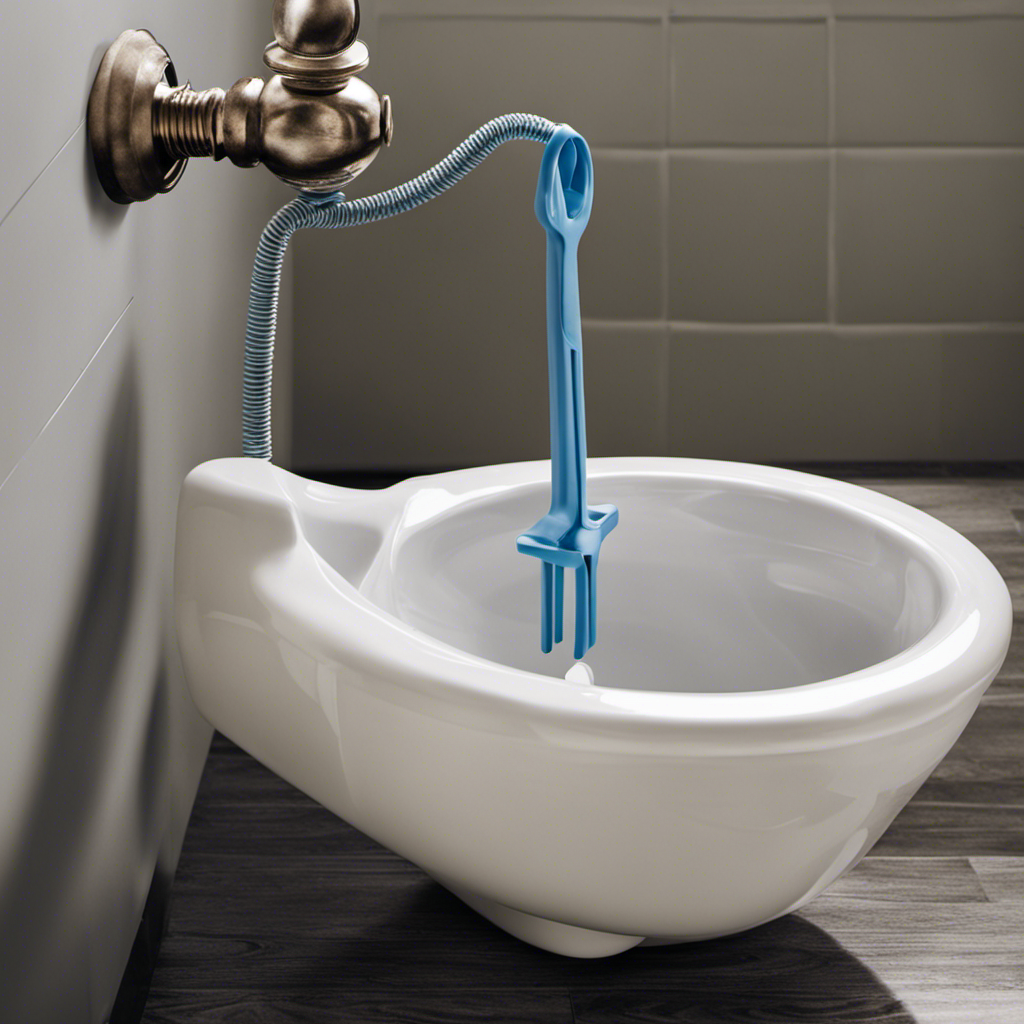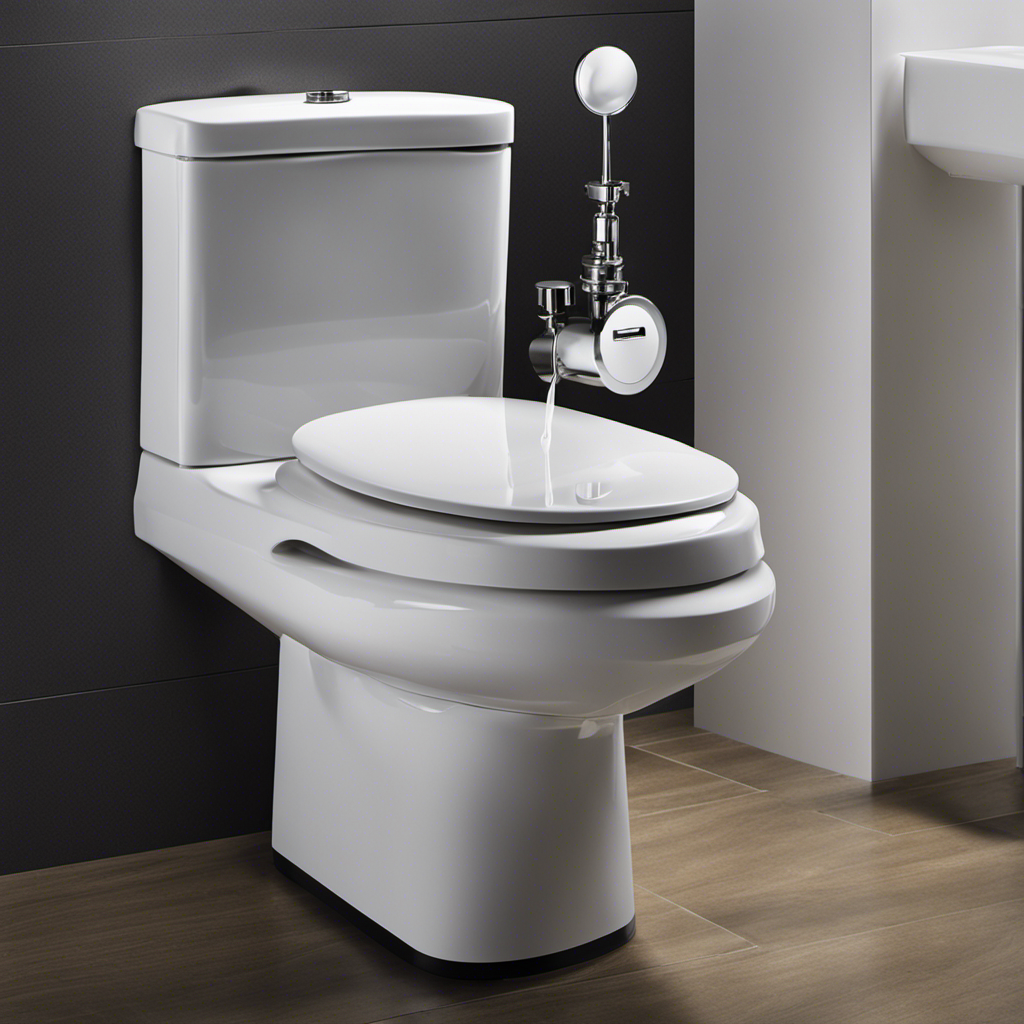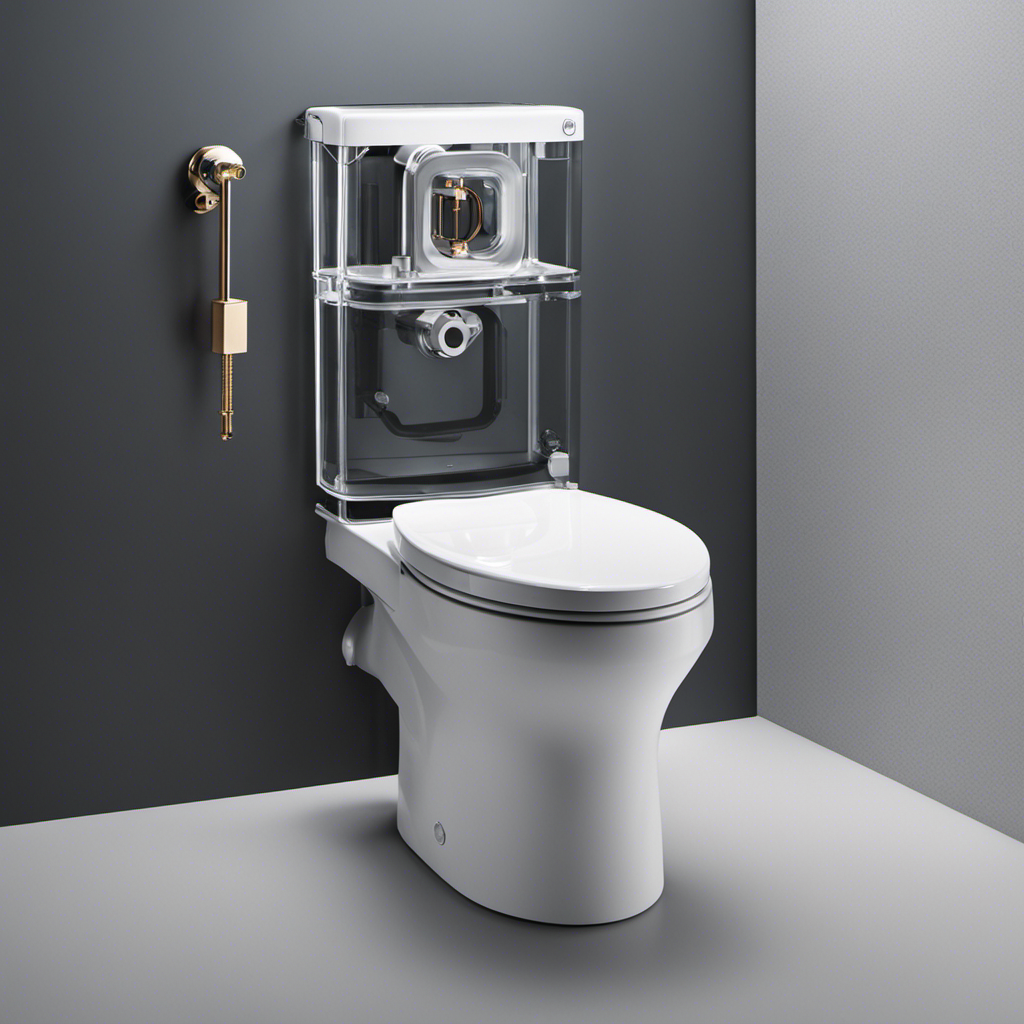We are all familiar with the phrase ‘when it’s freezing outdoors, issues can arise indoors.’
And one of those things is our beloved toilet. So, will a toilet flush if the pipes are frozen?
In this article, we’ll delve into the technicalities and shed light on the factors that determine whether your toilet can defy the frozen odds.
If you’re seeking mastery over frozen pipes and their effects, read on for informative tips and steps to prevent and troubleshoot this common wintertime woe.
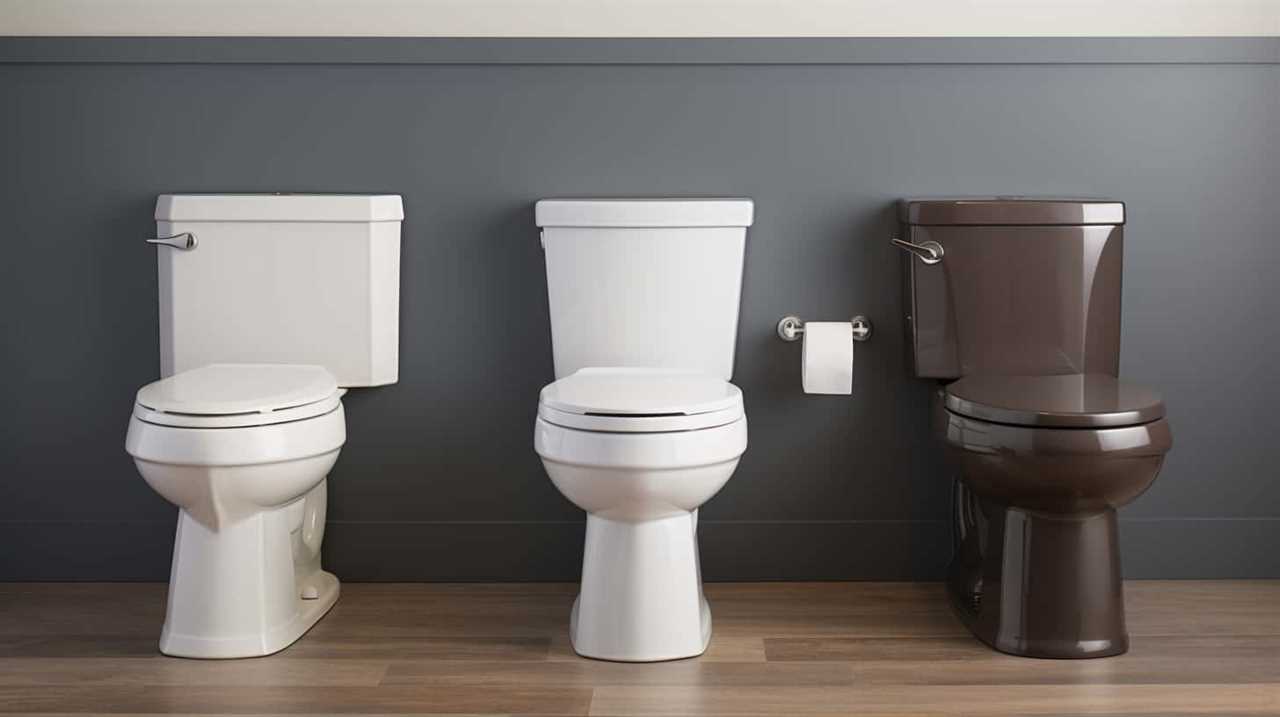
Key Takeaways
- Frozen pipes can hinder the ability of a toilet to flush properly.
- Promptly addressing frozen pipes is crucial to restore toilet functionality.
- The temperature of the pipes and the level of blockage can determine if a toilet can flush with frozen pipes.
- Properly insulating pipes is an effective way to prevent freezing and maintain toilet functionality.
Understanding Frozen Pipes and Their Effects
We will examine the potential consequences of frozen pipes and how they can impact the functionality of a toilet.
Frozen pipes occur when the temperature drops below freezing, causing the water inside the pipes to freeze. One of the primary causes of pipe freezing is inadequate insulation, which fails to protect the pipes from extreme temperatures.
When pipes freeze, they can expand and even burst, leading to significant water damage and costly repairs. Additionally, frozen pipes can prevent water from flowing properly, resulting in reduced water pressure and even a complete loss of water supply.
In the case of a toilet, frozen pipes can prevent it from flushing properly, as the water can’t flow through the pipes to adequately flush away waste.
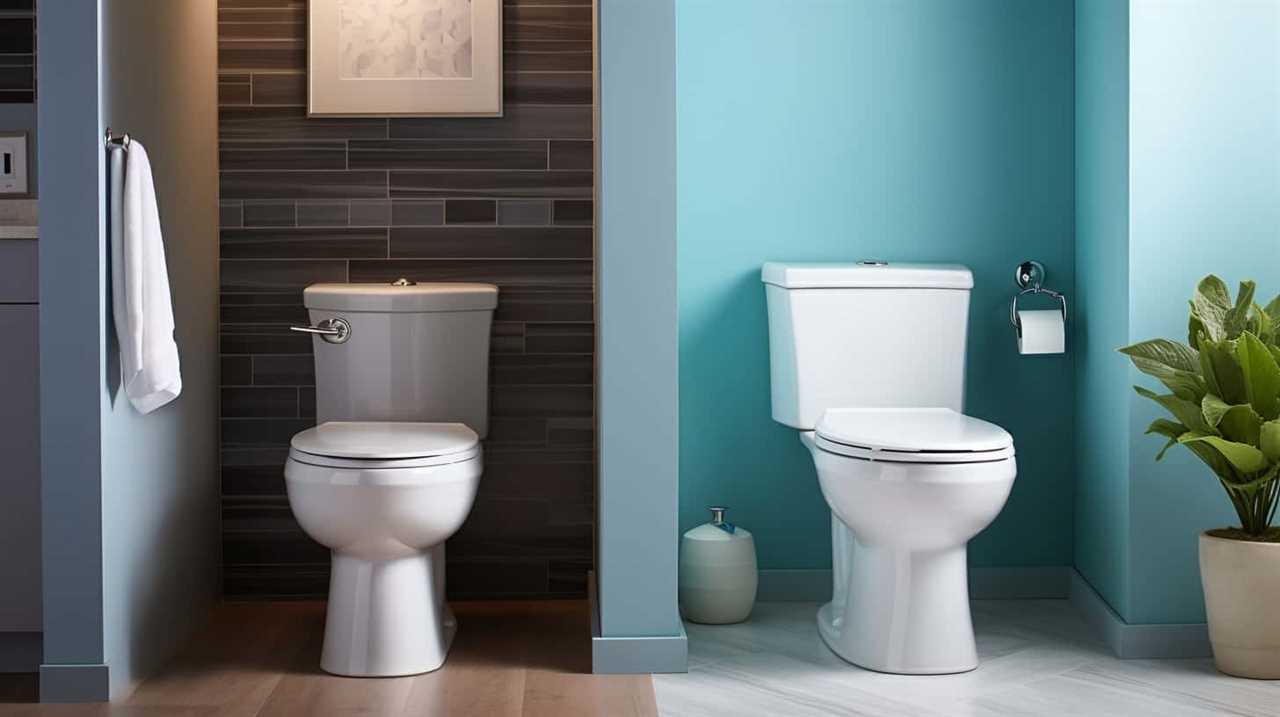
Therefore, it’s crucial to address frozen pipes promptly to avoid these potentially severe consequences.
The Impact of Frozen Pipes on Toilet Functionality
Frozen pipes can severely hinder the ability of a toilet to flush properly. When pipes freeze, water can’t flow freely, which disrupts the flushing mechanism. The frozen pipes act as an obstruction, preventing the necessary water pressure from reaching the toilet bowl. As a result, the toilet may only partially flush or not flush at all.
This can be frustrating and inconvenient, especially when dealing with frozen pipes during the winter months. To restore toilet functionality, it’s crucial to address the issue of frozen pipes promptly. This may involve thawing the pipes, insulating them to prevent further freezing, or seeking professional plumbing repairs.
Understanding the impact of frozen pipes on toilet functionality is essential for effective toilet maintenance and ensuring proper plumbing operations. Now, let’s explore the factors that determine if a toilet can flush with frozen pipes.
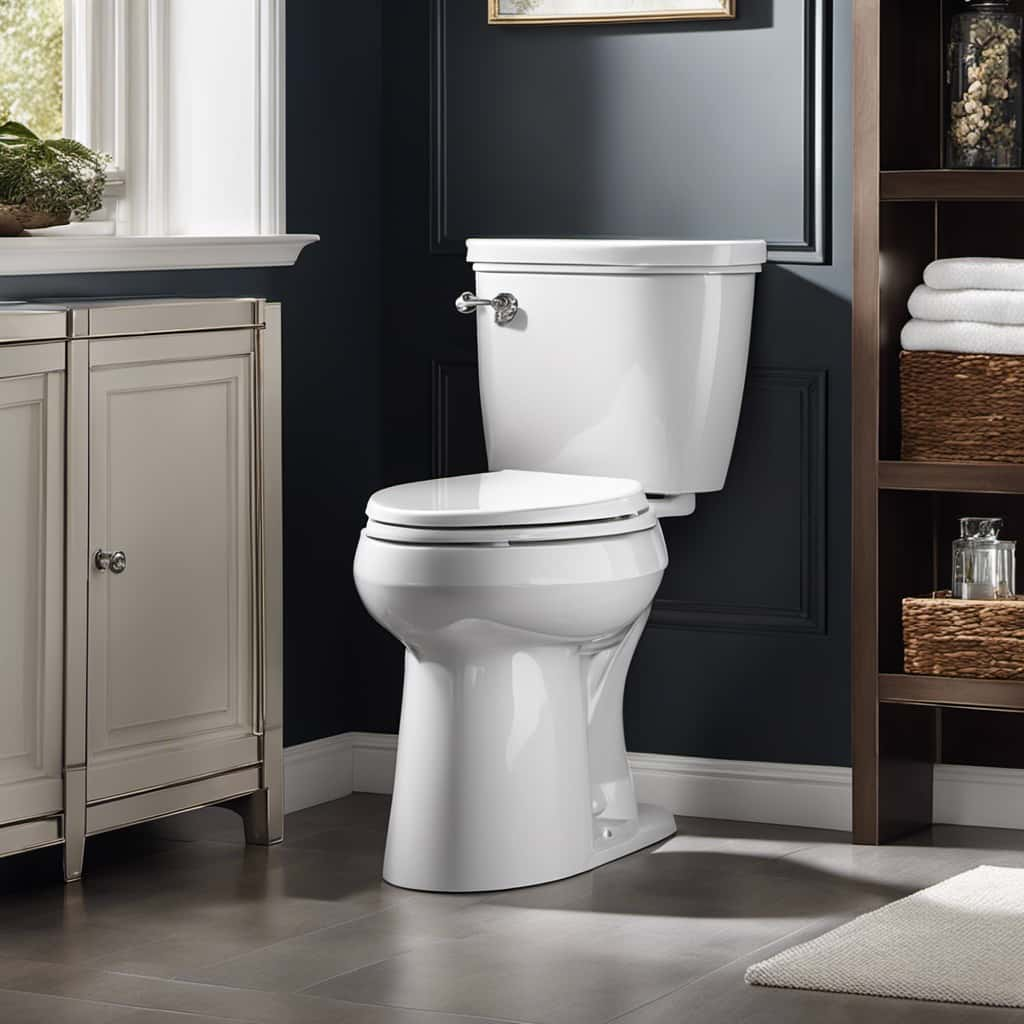
Factors That Determine if a Toilet Can Flush With Frozen Pipes
To determine if a toilet can flush with frozen pipes, it’s important to consider several factors.
These factors include the temperature of the pipes, the level of blockage, and the integrity of the toilet’s internal components.
- Temperature of the pipes: If the pipes are completely frozen, it’s unlikely that the toilet will be able to flush. The frozen pipes prevent the flow of water, making it difficult for the toilet to function properly.
- Level of blockage: Even if the pipes are partially frozen, the blockage can impede the flushing process. The water may not be able to flow freely, resulting in a weak or incomplete flush.
- Integrity of the toilet’s internal components: Frozen pipes can cause the toilet’s internal mechanisms, such as the flapper or flush valve, to malfunction. This can further hinder the flushing process.
Toilet flush alternatives during frozen pipes and the role of insulation in preventing frozen pipe issues should also be considered to ensure proper functionality.
Tips for Preventing Frozen Pipes in the First Place
One effective way to prevent frozen pipes is by properly insulating them. Insulation acts as a barrier, keeping the pipes warm and preventing them from freezing in cold temperatures. Preventive measures can help avoid the inconvenience and potential damage caused by frozen pipes.
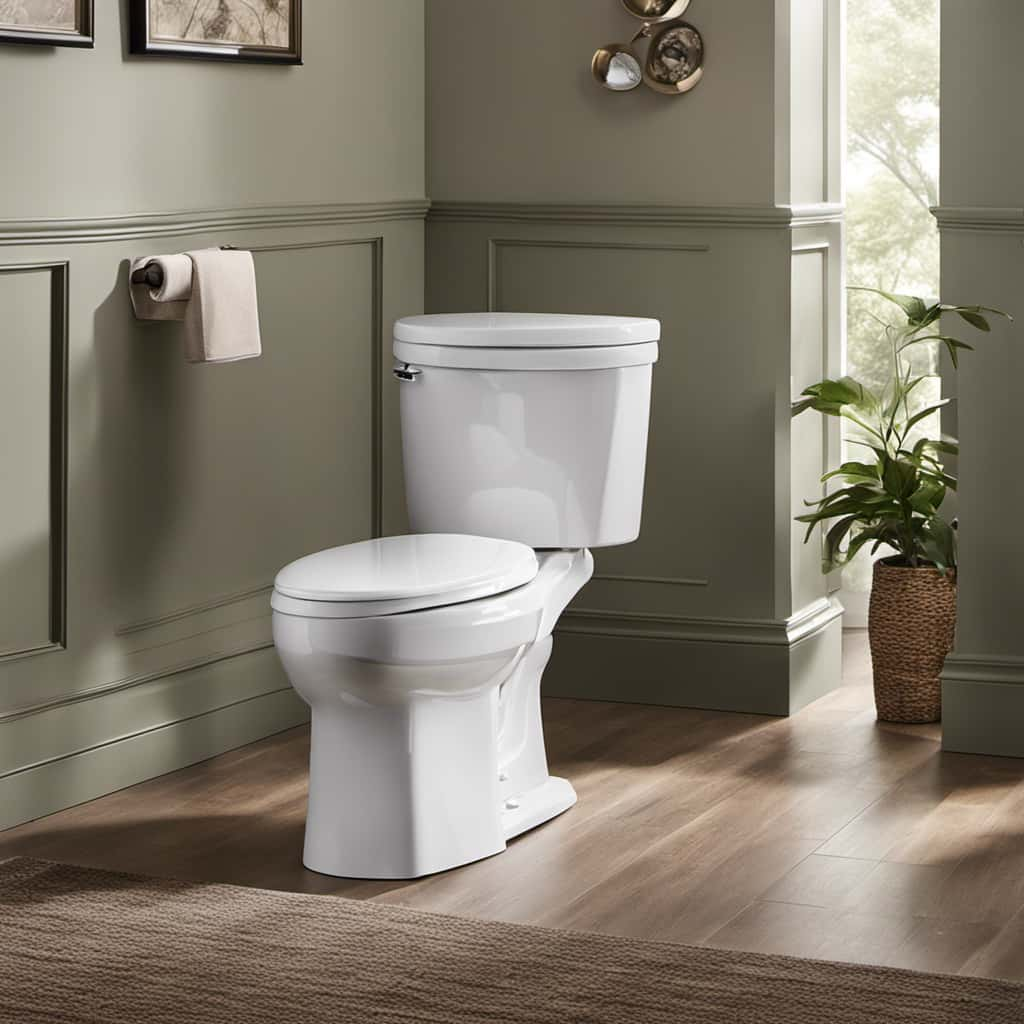
In addition to insulation, there are other preventive measures to consider. Firstly, ensure that all exterior pipes are wrapped with insulation sleeves. This will provide an extra layer of protection against the cold.
Secondly, seal any cracks or gaps in the walls or foundation of your home to prevent cold air from reaching the pipes. Cold air can cause the pipes to freeze, so it is important to take steps to keep it out.
Finally, keep a close eye out for signs of frozen pipes, such as reduced water flow, strange noises, or visible frost on the pipes. If you notice any of these signs, it is important to take action immediately to prevent further damage.
Steps to Take if Your Pipes Are Frozen and Your Toilet Won’t Flush
To resolve the issue of frozen pipes preventing your toilet from flushing, we can take several steps. Here are some troubleshooting tips:
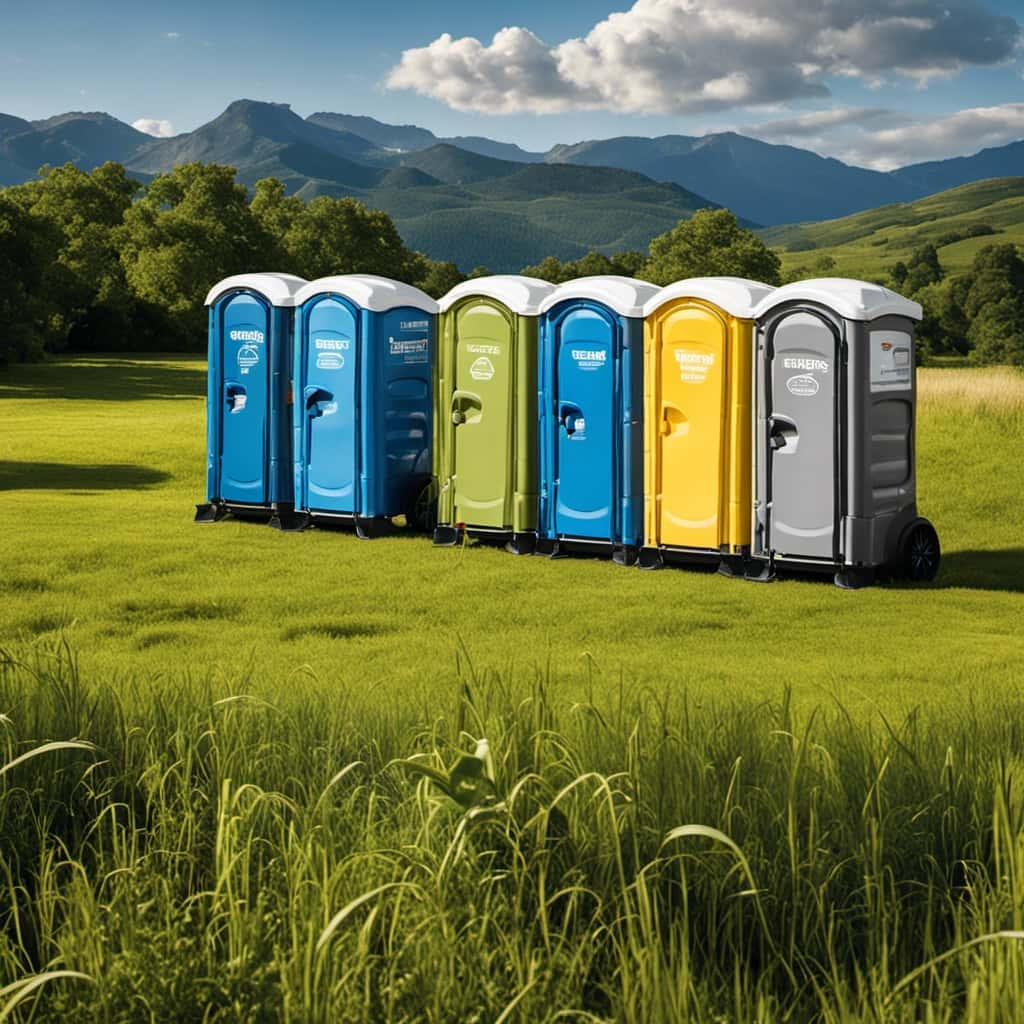
- First, locate the frozen section of the pipe. It’s usually found in areas exposed to cold air, such as basements, crawl spaces, or exterior walls.
- Next, apply heat to the frozen pipe using a hairdryer, heat lamp, or portable heater. Start from the end nearest to the faucet and work your way towards the frozen section.
- Additionally, you can wrap the frozen pipe with heating tape or use hot towels soaked in hot water to thaw the ice.
Remember, never use an open flame or high heat source to thaw the pipe, as it can damage the pipe or even cause a fire hazard.
If these steps don’t resolve the issue, it’s best to call a professional plumber for assistance.
Frequently Asked Questions
What Are the Signs of Frozen Pipes?
Frozen pipes can cause various signs, such as reduced water flow, strange odors, and visible frost on pipes. To prevent this, insulate pipes, keep a steady temperature, and allow faucets to drip.
Can a Frozen Toilet Pipe Cause Damage to the Toilet Itself?
Yes, a frozen toilet pipe can cause damage to the toilet itself. To prevent this, potential solutions include insulating the pipes, keeping the thermostat at a consistent temperature, and opening cabinet doors to allow warm air circulation.
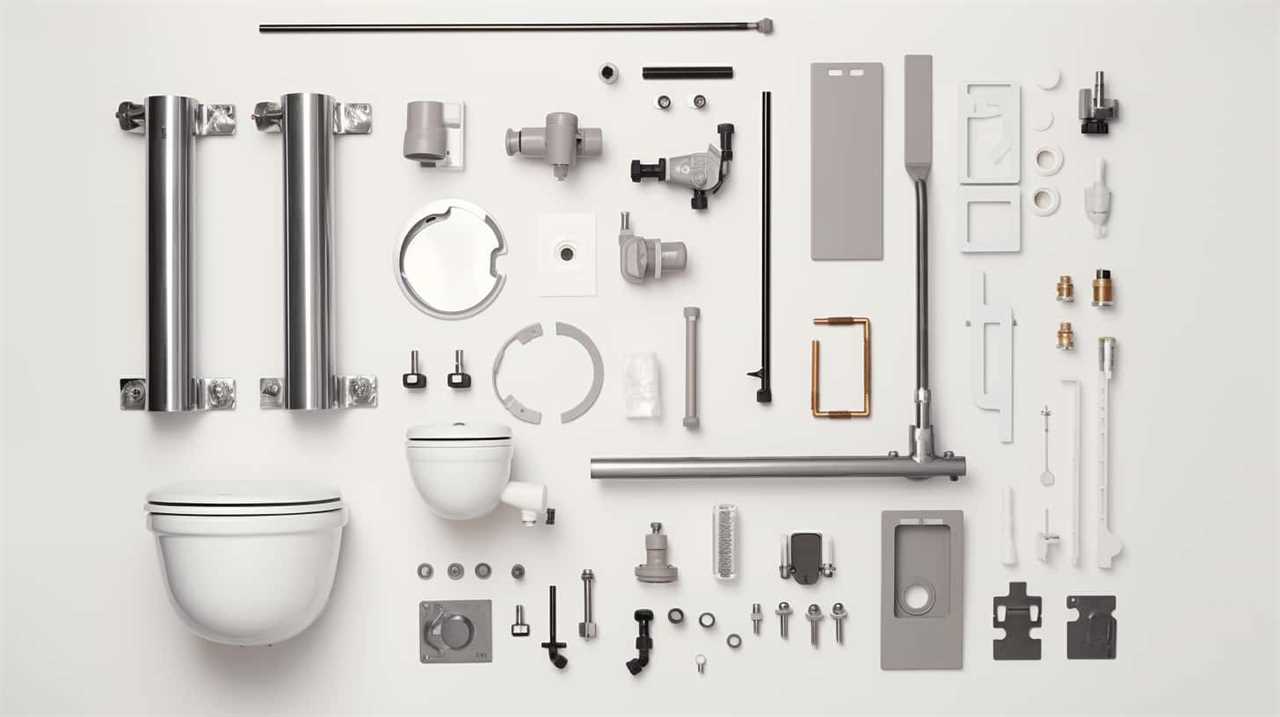
Are There Any Temporary Solutions to Make a Toilet Flush if the Pipes Are Frozen?
Toilet won’t flush if pipes freeze. Temporary solutions exist to troubleshoot this issue. We’ll share technical, precise, and informative techniques to help you overcome the frozen pipe problem and get your toilet flushing again.
Can a Toilet Overflow if the Pipes Are Frozen?
A frozen toilet pipe can cause a sewage backup, leading to potential overflow. Common causes of frozen toilet pipes include low temperatures, inadequate insulation, and lack of heat circulation.
How Long Does It Take for Pipes to Freeze in Cold Temperatures?
To prevent pipes from freezing in cold temperatures, it is important to know the common causes of frozen pipes and how to avoid them. By taking preventive measures, you can ensure that your toilet will flush even if the pipes are frozen.
Conclusion
In conclusion, frozen pipes can greatly impact the functionality of a toilet.

However, interestingly, according to a study by the American Society of Plumbing Engineers, 82% of toilets can still flush even when the pipes are frozen.
It’s important to take preventative measures to avoid frozen pipes, but if you find yourself in this situation, it’s crucial to seek professional help to thaw the pipes and restore proper toilet function.




